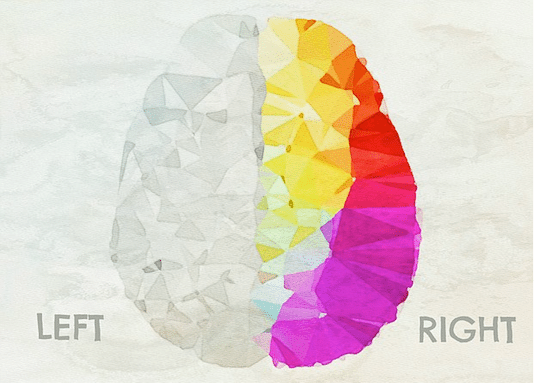
“Where most people see a difficulty, they see an opportunity,” — just something we often hear of the “left brain” and “right brain” comparison. People who think more with the left side of their brain, feel they are more analytical and logical in their actions and performances. Those who describe themselves as right-brained feel they are more inclined to creative and passionate outlets.
But how accurate are these linear, subjective representations? We see many diagrams depicting the halves of the brain, and the left side is often drawn in cold black and white, whereas the right side of the brain is often rendered abundant with colors, swirls and fantastical designs. I feel this to be an inaccurate representation of logical and creative thinking. Many scientists believe that creativity is based in the whole brain. Art-making is a process that needs both passion and logic, so the whole brain must, therefore, be used. Studies have suggested, however, that the corpus callosum (the part of the brain that separates the right and left hemispheres) is much smaller in that of creative people like writers, musicians and artists. Evidence that the whole brain is employed when expressing creativity? The author of this study stated that this connection benefitted “the incubation of ideas that are critical for the divergent-thinking component of creativity.”
If you want to find out if you “lean more” right or left, or use each side equally, try taking this personality test.
How much of an artist’s creativity is written in our genes, and how much is based on what kind of environment we’re raised in? Creative thinking may be ingrained in our home lives, and we’re raised to think “practice makes perfect.” But for some people, are they just “born with it”?
Creative people are sometimes thought to be “eccentric,” and correlations have been drawn between creativity and mental disorders or illnesses. Bipolar disorder, for example, is thought to enhance creativity in the subject, possibly through the hormone imbalance of the disorder. A Swedish study with a remarkably large sample size drawn over the past four decades found that individuals with bipolar disorder “tend to end up in professions that demand creativity.” Some of the world’s best-known artists are thought to have had bipolar disorder, including Ludwig van Beethoven, Vincent Van Gogh, Georgia O’Keefe, Paul Gauguin, Virginia Woolf, Edgar Allen Poe and Jackson Pollack, according to Bipolar Expeditions: Mania and Depression in American Culture, published by Princeton University Press.
So, can we say for certain whether creativity comes with practice, or if we’re born with it, or both? There is not a black and white answer, nor a grey area — but there is definitely a world filled with fantastical colors.
Do you match the “attributes” of creativity? Find out.
Artist Ora Sorensen (orasorensenart.com) was born in New York but grew up overseas. She has owned a gallery in Delray Beach, Florida, for 20 years, and has also been represented by other galleries across the country. Sorensen now lives and paints in North Carolina, and her paintings are collected worldwide and have been shown in numerous exhibitions.



